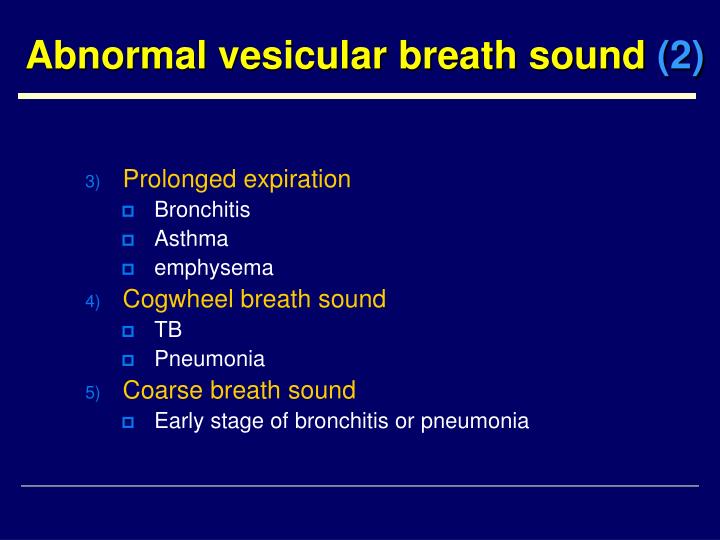

In: disorders of respiratory center, in healthy older people, children sometimes during sleep, severe cardiac failure, narcotic drug poisoning, neurologcial diseases.ħ/ Biots breathing (periodic - the same depth of breathing – followed with sudden apnea – irregular respirations varying in depth and interrupted by intervals of apnea, lacking the repetitive pattern of periodic respiration.

If you suspect this to be the case, place your hand on the patient's abdomen as they breathe, which should accentuate its movement.ĬHANGES OF BREATHING (normal breath frequency 12-16 per min.)ġ/ tachypnea (higher breath frequency - fever, exercise, pain, cardiac diseases, infectious diseases, anemia, obesitas)Ģ/ bradypnea (lower breath frequency - coma, poisoning,uremia)ģ/ Kussmaul breathing (deep, regular - diabetic acidosis) (air hunger) – periodical - rapid, deep, regular and labored breathing.ĥ/ apnea - absent breathing/breath arrestĦ/ Cheyne-Stokes breathing (periodic - gradually deep then decreased breathing with apnea - intervals of apnea and crescendo/decrescendo sequence of respiration. emphysema) or paralysis, the abdominal wall may move inward during inspiration, referred to as paradoxical breathing. In cases of severe diaphragmatic flattening (e.g. Normally, the descent of the diaphragm pushes intra-abdominal contents down and the wall outward. The direction of abdominal wall movement during inspiration.

SYMMETRY (contour) - configuration of the chestġ/ normosthenic - (symmetrical, epigastric angle 90 degree)Ģ/ hypersthenic - (short, wide, epigastric angle obtuse)ģ/ asthenic - (long, narrow, epigastric angle sharp) Increased anterior-posterior diameter as well as diaphragmatic flattening.ģ/ vertebral column deformity (kyphosis, gibus - humped back, in kyphoscoliosis) Barrel chest: Associated with emphysema and lung hyperinflation. The x-ray shows a subtle concave appearance of the lower sternum.Ģ/ acquired deformity (rachitis - D vitamin deficiency at an age between 6th and 19th month, barrel chest/pectus – in emphysema, senile kyphosis). This gives the chest a somewhat "hollowed-out" appearance. Pectus excavatum: Congenital posterior displacement of lower aspect of sternum. In Latin "pectus" means "chest" and "carina" keel = a chest shaped like the keel of a boat (looking at the keel from outside the boat) – in Marfan sy, kyphoscoliosis, pectus excavatum – funnel chest - "Caved-in" chest – in Marfan sy, rachitis). SHAPE 1/ inborn deformity (pectus carinatum/gallinaceum – pigeon chest - Pigeon-breasted. Size, shape, symmetry, type of breathing, changes of breathing, breathing movements, breath frequency INTERNAL MEDICINE INTRODUCTION – PROPEDEUTICS


 0 kommentar(er)
0 kommentar(er)
